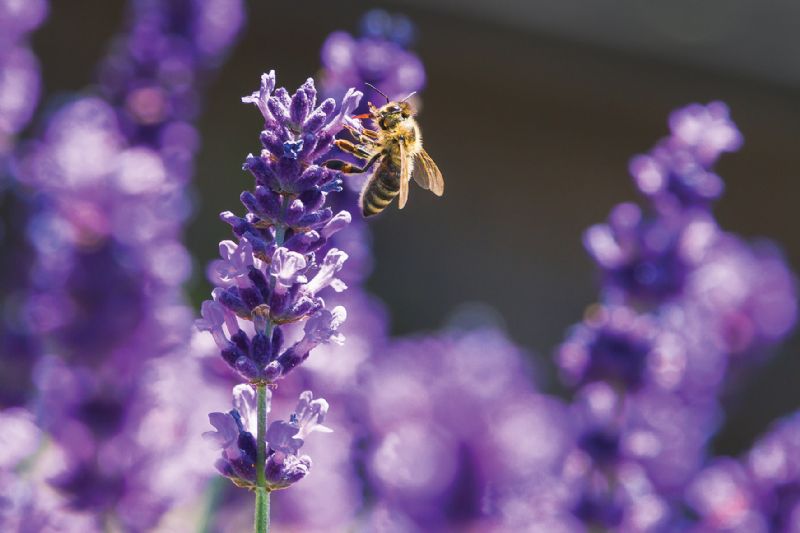- Home
- News, Articles & Reviews
We are hiring! Please click here to join our growing magazine delivery team in Gloucestershire!
Areas
Pets & Wildlife
Archive

Plants for pollinators
All Areas > Pets & Wildlife > Wildlife Matters
Author: Dorothy Glen, Posted: Monday, 24th April 2023, 09:00
I get a bit excited at this time of year when garden centres start filling up with colour. I find it almost impossible to go to a garden centre or shop with a garden section without coming home with a plant.
The number of plants I’ve ‘rescued’ from the clearance section at B&Q is ridiculous. It’s got so bad I have been known to hide them from my husband – I think I have a problem.
What we don’t have a problem with in our garden, are pollinators, because most plants I buy have nature in mind. Not just bees, but hoverflies, wasps, beetles, butterflies and moths. I love to see and hear the garden buzzing and busy, and with insects come other wildlife like birds, hedgehogs and frogs – all things beneficial to a balanced garden (they keep the slugs down, too!).
The risk with those colourful garden centre displays is that we pick up plants that look nice but are no use to pollinators. Many bedding plants (for example geraniums, pansies and primroses) are completely empty of nectar or pollen unless they are the native, uncultivated varieties, such as cranesbill geraniums, wild pansy and native yellow primrose.
The wonky veg of the garden centre
The wild varieties of these common plants are often scruffier than the cultivated versions. Sometimes the flowers are smaller, or they flower for a shorter time period. They are the wonky veg of the garden centre. But pop them in the garden in a sunny spot and embrace a bit of wonkiness, and you’ll see your garden come to life.
There are also plenty of plants which are not wild or native that are still fantastic for pollinators and commonly found in garden centres. Look for the RHS Plants for Pollinators bee logo, or go on a sunny day and watch where the bees go.
Last year I saw a display of purple salvia absolutely covered in bees. There are lots of salvia varieties; one of my favourites is ‘hot lips’, which flowers red and white all summer long. Salvia are in the sage family, and herbs are brilliant for wildlife. My purple sage plant is also teeming with life, not just bees but crickets too.
If you’re reluctant to have informal flowerbeds, consider planting up some pollinator-friendly pots instead. Every little helps, and variety across the garden is key. Similarly, as it is ‘no-mow-May’, consider letting the grass (and the treasures that may appear as a result) grow.
If you’d rather not let your whole lawn go wild, allow a smaller patch of long grass and consider keeping it that way for the longer term. You’ll provide a welcome shelter for all kinds of wildlife.
There are some great resources for gardening for pollinators online at www.bumblebeeconservation.org/beethechange – why not take a look and welcome life into your garden this summer!Other Images
Copyright © 2025 The Local Answer Limited.
Unauthorized use and/or duplication of this material without express and written permission from this site's author and/or owner is strictly prohibited. Excerpts and links may be used, provided that full and clear credit is given to The Local Answer Limited and thelocalanswer.co.uk with appropriate and specific direction to the original content.More articles you may be interested in...


© 2025 The Local Answer Limited - Registered in England and Wales - Company No. 06929408
Unit H, Churchill Industrial Estate, Churchill Road, Leckhampton, Cheltenham, GL53 7EG - VAT Registration No. 975613000You are leaving the TLA website...
You are now leaving the TLA website and are going to a website that is not operated by us. The Local Answer are not responsible for the content or availability of linked sites, and cannot accept liability if the linked site has been compromised and contains unsuitable images or other content. If you wish to proceed, please click the "Continue" button below:




